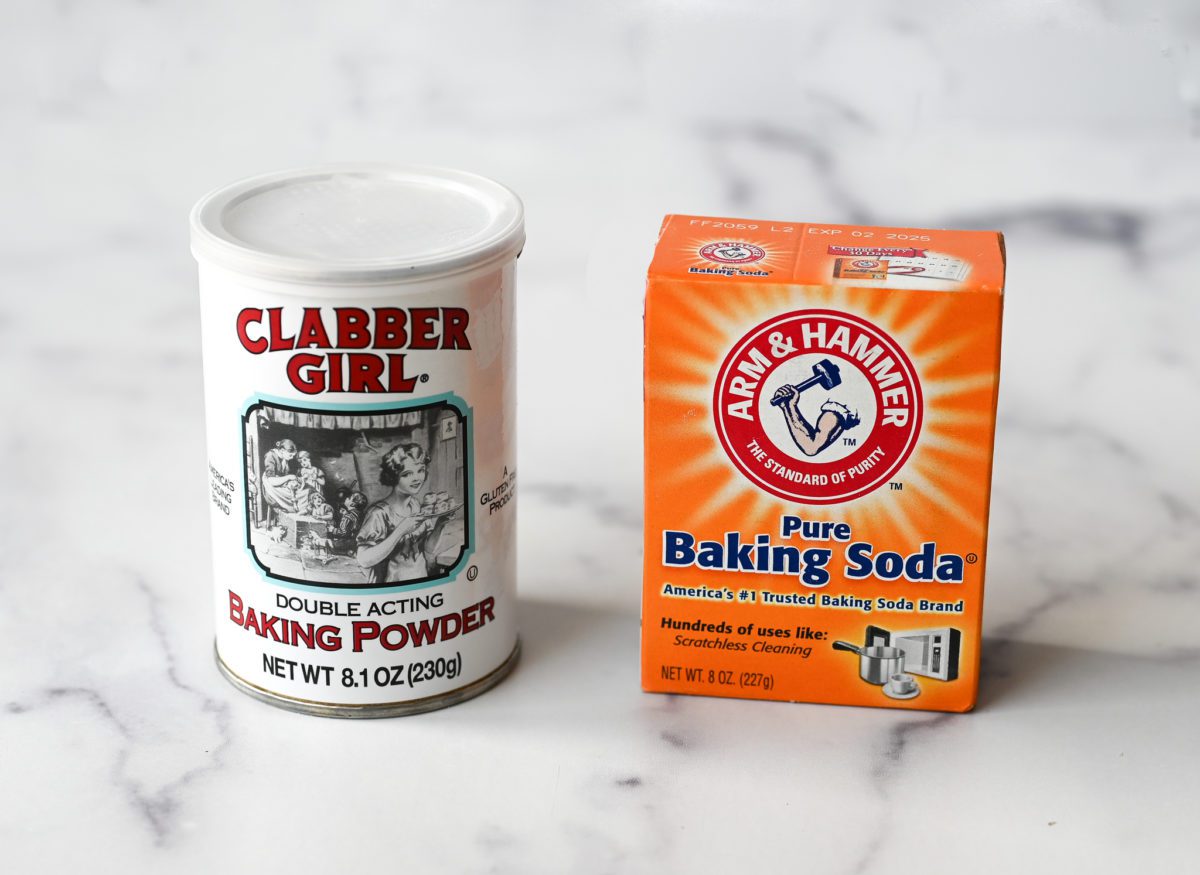Baking soda and baking powder are two types of leavening agents. Theyâre two distinct culinary products with similar functions. For the most part, you can use them both to give baked goods light, airy textures, but you may be wondering about baking soda vs. baking powder and which is better.Â
You cannot directly substitute one for the other. Instead, you have to make sure to modify the amounts and possibly add new ingredients when you swap baking soda for baking powder or vice versa. Â
As with baking soda, the purpose of baking powder is to create air bubbles that give your baked goods their light, airy texture. There are two types of baking powder: single action and double action. Single action baking powder creates the carbon dioxide bubbles upon contact with moisture, similar to baking soda.

What Are Leavening Agents?Â
Leavening agents are food-safe ingredients that cause baked goods to rise. Baking soda and baking powder are two of the most common leavening agents used in baked goods. Yeast is another popular option.Â
In general, leavening agents cause doughs and batters to expand by releasing gasses like carbon dioxide. Each one does this in a different way through distinct chemical processes. The end result is a baked good with a light and fluffy texture.Â
Baking Soda vs Baking Powder: Can You Use Baking Soda and Baking Powder Interchangeably?Â
You can use baking soda when a recipe calls for baking powder, and vice versa. Still, you have to be careful when youâre substituting one for the other. Never swap them directly in a one-to-one ratio.Â
The leavening power of baking soda is about three to four times stronger than baking powder. This means that you need a lot less baking soda in your recipes.Â
If a recipe calls for baking soda and you only have baking powder, you need to use the right baking soda to baking powder conversion. A good rule of thumb is to use three teaspoons of baking powder for one teaspoon of baking soda in a recipe. In this case, you shouldnât have to worry about adding acid. The recipe should already include acid, and if not, thereâs acid in the baking powder.Â
The conversion is a bit more difficult if the recipe calls for baking powder and you only have baking soda. First, you need to make sure that the recipe contains acid for the baking soda to react with.Â
If the recipe already contains an acid â like those included in the list above â then you should simply substitute one-quarter of a teaspoon of baking soda for every teaspoon of baking powder in the recipe. So â for example â if a recipe calls for two teaspoons of baking powder, you should only use one-half teaspoon of baking soda.Â
If the recipe doesnât contain an acid, then you need to add one yourself. You can use a variety of common kitchen ingredients. For every one teaspoon of baking powder, you can substitute one-quarter of a teaspoon of baking soda and then one of the following:Â
- One-half teaspoon of cream of tartar (preferred)
- One teaspoon of lemon juice
- One teaspoon of white vinegar
Other acids work too. Just keep in mind that some â like lemon juice and vinegar â can slightly alter the taste of your finished product. Lemon juice, for example, will make your baked goods tangier and even a bit citrusy.Â
Too much baking soda can also alter the taste of your baked goods, making your treats taste metallic or soapy.Â
What is baking powder, and how is it different from baking soda?
FAQ
When should I use baking powder?
What is difference between baking soda and baking powder?
Why is baking powder used in recipes?
What happens if you don’t use baking powder?
What baking powder do you use?
The baking powder I use is called Magic baking powder and it’s produced by Kraft. Magic baking powder (like Rumford baking powder sold in the US) is made of cornstarch, monocalcium phosphate, and sodium bicarbonate. Monocalcium phosphate is the acid that reacts with sodium bicarbonate to produce the gas carbon dioxide, which makes your cakes rise.
Are powdered forms of superfoods good for you?
Powdered forms of superfoods are only good when it is not possible to achieve the same goals by eating natural foods. They are great as a complementary strategy but under no circumstances should they replace a healthy diet with natural foods.
What is baking powder & how does it work?
Baking powder is a two-in-one chemical leavening that combines a powdered alkali (sodium bicarbonate) with a powdered acid (originally, tartaric acid). When moistened in a dough or batter, a chemical reaction takes place that produces carbon dioxide gas, inflating cookies, cakes, and pancakes.
What is baking powder made of?
Baking powder is a dry chemical leavener made from sodium bicarbonate (baking soda), an acid (like cream of tartar) and cornstarch. Recipes call for baking powder when lift is needed. If you’ve ever forgotten the baking powder when making a cake, you learned the hard way just how important it is.
